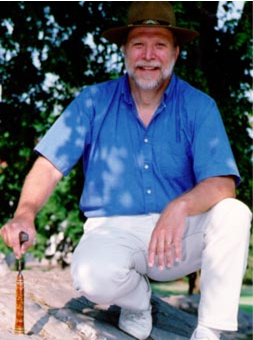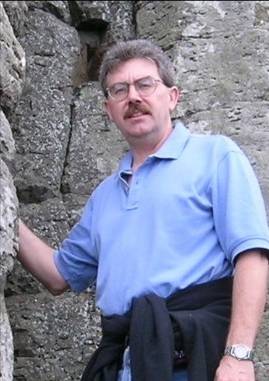James Madison University - Department of Geology & Environmental Science
Evolution is More Than Darwinism:
Elaborating, Self-Organizing, and Fractionating Systems
Expanding Evolutionary Theory Beyond Darwinism with Elaborating, Self-Organizing, and Fractionating Complex Evolutionary Systems
Fichter, Lynn S., Pyle, E.J., and Whitmeyer, S.J., 2010, Journal of Geoscience Education, v. 58, n. 2, March, 2010, p. 65-85pdf of paper Journal of Geoscience Education
Abstract:
(to paper)
Earth systems increase in complexity, diversity, and interconnectedness with time, driven by tectonic/solar energy that keeps the systems far from equilibrium. The evolution of Earth systems is facilitated by three evolutionary mechanisms: elaboration, fractionation, and self-organization, that share universality features not found in more familiar equilibrium systems. These features include: 1. evolution to sensitive dependent critical states, 2. avalanches of changes following power law distributions with fractal organization, and 3. dynamic behaviour as strange attractors that often exhibit bi-stable behaviour. We propose a new approach to teaching Earth systems theory, where theoretical underpinnings of evolutionary mechanisms are introduced, followed by explorations of how the mechanisms interact to integrate the lithosphere, atmosphere, hydrosphere, and biosphere into a unitary evolutionary system. We incorporate conceptual and computer-based interactive models (included here as educational resources) within our lesson plans that illustrate a hierarchy of principles and experimental outcomes for evolutionary mechanisms. Application of this educational framework requires explicating complex systems mechanisms and their interactions, exploring their applicability to Earth systems, and imbedding them in high school was well as college introductory and upper level Earth Science classrooms to put all Earth systems on an evolutionary theoretical foundation.
Evolution is any process that leads to increases in complexity, diversity, order, and/or interconnectedness with time.
Links to discussions of:
Elaborating Evolutionary Mechanisms - Elaborating evolution begins with a seed, an ancestor, or a randomly generated population of agents, and evolves by generating, and randomly mutating, a large diversity of descendants which are evaluated by an external fitness function; those that do not measure up selected out. The fitness function may be a real environment, an abstract environment, or another “species” of agents.
Self-Organizing Evolutionary Mechanisms - Self-organizing evolution begins with an initial state of random agents that through the application of simple rules of interaction among the agents (e.g. an algorithm, or chemical/physical laws)—Local Rules leads to Global Behavior—evolves a system of ordered structures, patterns, and/or connections without control or guidance by an external agent or process; that is, pulls itself up by its own boot straps.
Fractionating Evolutionary Mechanisms - Fractionating evolution begins with a complex parent which is physically, chemically, or biologically divided into fractions—through the addition of the right amount of energy—because of differences in the size, weight, valence, reactivity, etc. of the component particles.
All evolutionary systems are complex systems in the technical sense of that term. Biological evolution is a complex system, but, until recently has not been thought of or modelled as a complex system. Likewise, fractionating evolution of petrographic systems using AFM or phase diagrams, or sediment evolution using QFL or Q/FL/Matrix diagrams has been a mainstay of the geosciences. We have been talking about evolution all along, but because we have modelled these as equilibrium systems there has been a conceptual block to thinking of them in any terms other than descent to equilibrium—which according to the definitions of evolution is not really evolution.
It is the recognition that all evolutionary systems are non-equilibrium systems and evolve to complexity with a whole new, integrated set of properties and behaviors that has the potential to transform our teaching of evolutionary Earth systems to a new paradigm. But, this also requires that we introduce our students to chaos\complex systems principles and models because these systems possess properties that are very different from the equilibrium thinking most of them have been trained in so far.
These papers and web sites provide the rationalle and rubrics for teaching evolutionary systems as chaos/complex systems. We can introduce these ideas in as little as 3 - 5 50 minute classes, depending on how many examples we want to explore. But, with these new concepts students will be able to think about real world systems in ways that will yield more understanding and insight.
Links to discussions of:
Elaborating Evolutionary Mechanisms
Self-Organizing Evolutionary Mechanisms
Fractionating Evolutionary Mechanisms
 Lynn S. Fichter
Lynn S. Fichter
 Steve Baedke
Steve Baedke
 Eric Pyle
Eric Pyle
 Steve Whitmeyer
Steve Whitmeyer